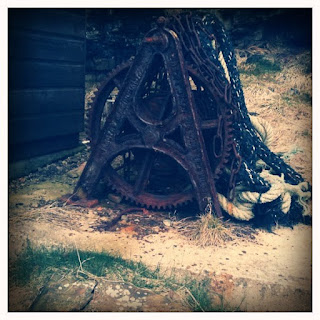
The old Hotel, site of Jan De Groot's house.

Towards the harbour, as the sign says.

weedy sea.

Looking West.

The view across the Pentland Firth to Stroma.
Named after Jan De Groot, a Netherlander who, in the 1490s, obtained the charter to run a ferry to Orkney,
John o' Groats has been called a tourist trap and was recently voted the most dismal town in Scotland. This is understandable as the harbour area is full of tourist shops selling an incredible array of Tartan Tat, but we weren't there for the trinkets and clan memorabilia, the Nessie chocolates, the shortbread and the Tams. As we descended from the hills into John o' Groats the view was spectacular, with views of the tiny flattened island of Stroma, the gnarled outcrops of the Pentland Skerries and the Orkney Archipelago behind, looming through the sea mist. Like any tourist town, if you like a bit of faded glamour (the old John o' Groats hotel for example) and appreciate the desperate commercialism, it has it's charm, and like Las Vegas, the Vatican, or the Great Wall of China,where there is a traveller there will always be a hawker. The selling point of John o' Groats is that it is supposed to be the most northerly point of the mainland UK, which it isn't, but it is certainly the most north easterly tourist trap, and it's location is spectacular, and the truly magnificent sights of Duncansby head await to the right of the town.












































